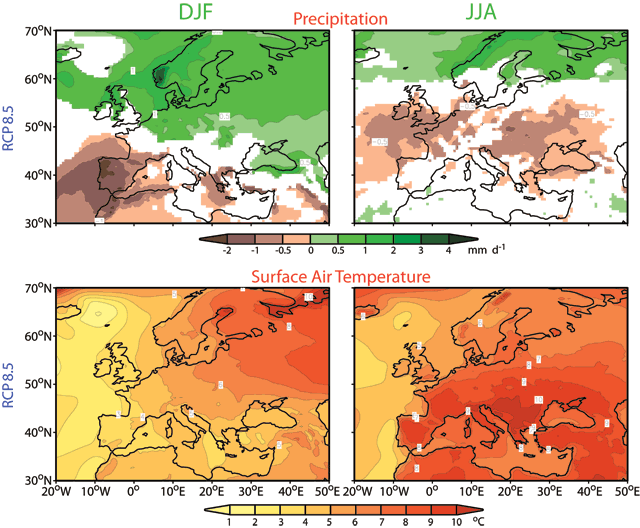August 19th, 2013
Key Findings
- The wintertime response to climate change in the late 21st century is characterized by an enhancement of the positive phase of the North Atlantic Oscillation in sea level pressure, and pole-ward and eastward displacements of the Atlantic jet stream and storm track.
- These circulation changes are linked to atmospheric responses to the gradient of the altered SST forcing in the North Atlantic, which is associated with weakening of the Atlantic Meridional Overturning Circulation.
- The eddy vorticity fluxes in the perturbed storm track reinforce the response pattern to climate change.
- In summer, the projected enhancement of convection over the eastern tropical Pacific is accompanied by a wavetrain spanning the North America-North Atlantic-Europe sector. This feature is associated with diminished storm track activity at 40°-50°N, and an eddy forcing pattern that matches well with the summertime response in the late 21st century.
Ngar-Cheung Lau, Jeffrey J. Ploshay. Journal: Journal of Climate. DOI: 10.1175/JCLI-D-13-00151.1
Summary
The impacts of climate change on the North America-North Atlantic-Europe sector are studied using a coupled general circulation model (CM3) and a high-resolution atmosphere-only model (HiRAM), both developed at the Geophysical Fluid Dynamics Laboratory. Long-term changes in surface temperature, precipitation and storminess patterns over Europe and the North Atlantic are projected.
In winter, the model experiments project a drying trend over southern Europe, and a strong warming trend over northwestern Europe, towards the end of the 21st century.
In summer, dry and warm conditions are projected over Europe within the 35°-50°N zone.



